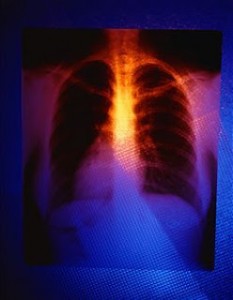 Corticosteroids have proven to be valuable in the treatment of asthma, but their use is limited because of the undesirable and often serious side effects from their prolonged administration. Al-temate-day administration has reduced, but not eliminated, these difficulties. As another means of reducing systemic side effects, administration of aerosol hydrocortisone, prednisolone, and dexa-methasone has been evaluated. These steroids were effective only at doses which suppressed adrenal function. Fluorinated steroid esters that are highly active topically show promise of controlling asthma at doses that do not produce systemic effects.
Corticosteroids have proven to be valuable in the treatment of asthma, but their use is limited because of the undesirable and often serious side effects from their prolonged administration. Al-temate-day administration has reduced, but not eliminated, these difficulties. As another means of reducing systemic side effects, administration of aerosol hydrocortisone, prednisolone, and dexa-methasone has been evaluated. These steroids were effective only at doses which suppressed adrenal function. Fluorinated steroid esters that are highly active topically show promise of controlling asthma at doses that do not produce systemic effects.
Triamcinolone acetonide, a nonpolar water-insoluble fluorinated corticosteroid, had been prepared in a metered-dose aerosol device propelled by dichlorodifluoromethane (Freon 12 J.” In a one-month double-blind controlled study involving 25 steroid-dependent severely asthmatic patients, triamcinolone acetonide aerosol proved superior to a placebo in reducing the oral requirement for corticosteroids. Herein we present the results of treatment of these severely asthmatic patients with triamcinolone acetonide aerosol for 12 months, emphasizing the long-term efficacy, side effects, and adrenal recovery. Hopefully, our experience will guide physicians in the management of asthmatic patients who will soon be making the transition from oral steroid therapy to aerosol steroid therapy.
Continue reading “A One-Year Trial of Triamcinolone Acetonide Aerosol in Severe Steroid-Dependent Asthma”


 Although smoking cessation has been clearly demonstrated to reduce subsequent cardiovascular mor-tality, whether smoking reduction or “reduced exposure” products confer any health benefits is still unknown. Due to the difficulty in carrying out prospective, randomized studies assessing long-term outcomes data, use of other measures (ie, biomarkers) that are known to be altered during smoking and normalize during smoking cessation is an attractive alternative in researching risk reduction approaches. Partial normalization of reliable biomarkers during smoking reduction may indicate that this approach confers some health benefits especially if changes in the selected biomarkers are the underlying cause for smoking-related disease. To date, few studies have systematically examined the reliability and dose-responsiveness of biomarkers for CVD.
Although smoking cessation has been clearly demonstrated to reduce subsequent cardiovascular mor-tality, whether smoking reduction or “reduced exposure” products confer any health benefits is still unknown. Due to the difficulty in carrying out prospective, randomized studies assessing long-term outcomes data, use of other measures (ie, biomarkers) that are known to be altered during smoking and normalize during smoking cessation is an attractive alternative in researching risk reduction approaches. Partial normalization of reliable biomarkers during smoking reduction may indicate that this approach confers some health benefits especially if changes in the selected biomarkers are the underlying cause for smoking-related disease. To date, few studies have systematically examined the reliability and dose-responsiveness of biomarkers for CVD.
 Recruitment and Characteristics of Subjects
Recruitment and Characteristics of Subjects
 Study Design
Study Design
 Interstitial nephritis, a common cause of kidney failure, has a complex and largely unknown pathogenesis. In a new published paper in
Interstitial nephritis, a common cause of kidney failure, has a complex and largely unknown pathogenesis. In a new published paper in
 Although the idea of reducing tobacco toxin exposure among continuing smokers is not a new concept, recent efforts by the tobacco industry to develop and market potential reduced-exposure products have resulted in an increased interest in examining this approach. The escalating introduction of potential reduced-exposure products has prompted the US Food and Drug Administration to sponsor a report from the Institute of Medicine and for the National Cancer Institute to convene an expert panel to consider the feasibility of this approach, the necessary science and systems that need to be in place in order to ensure public health, and the specific research areas that will need to be pursued. The identification of reliable and valid biomarkers for tobacco toxin exposure was determined to be a particularly important area of research.
Although the idea of reducing tobacco toxin exposure among continuing smokers is not a new concept, recent efforts by the tobacco industry to develop and market potential reduced-exposure products have resulted in an increased interest in examining this approach. The escalating introduction of potential reduced-exposure products has prompted the US Food and Drug Administration to sponsor a report from the Institute of Medicine and for the National Cancer Institute to convene an expert panel to consider the feasibility of this approach, the necessary science and systems that need to be in place in order to ensure public health, and the specific research areas that will need to be pursued. The identification of reliable and valid biomarkers for tobacco toxin exposure was determined to be a particularly important area of research.
 The first reported outbreak of influenza A during 1974 occurred in the third week of February at the University of Illinois in Urbana. Within two weeks, outbreaks were reported on the east coast. During the 1973-1974 influenza season, the mortality due to pneumonia and influenza for all 121 reporting cities in the United States did not rise significandy above the endemic level, except during the weeks of March 1 through April 30. The late onset of the outbreak almost certainly accounted for the delay in considering the diagnosis in the present series. This small epidemic was six days old, and all nosocomial cases had become symptomatic before the correct diagnosis was even considered. The present nosocomial outbreak lasted only seven days, and thereafter, no new cases of influenza-like illness were seen in the hospital.
The first reported outbreak of influenza A during 1974 occurred in the third week of February at the University of Illinois in Urbana. Within two weeks, outbreaks were reported on the east coast. During the 1973-1974 influenza season, the mortality due to pneumonia and influenza for all 121 reporting cities in the United States did not rise significandy above the endemic level, except during the weeks of March 1 through April 30. The late onset of the outbreak almost certainly accounted for the delay in considering the diagnosis in the present series. This small epidemic was six days old, and all nosocomial cases had become symptomatic before the correct diagnosis was even considered. The present nosocomial outbreak lasted only seven days, and thereafter, no new cases of influenza-like illness were seen in the hospital.
 Index Case
Index Case

Recent Comments